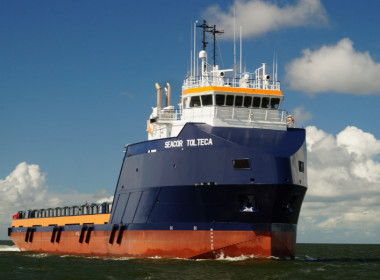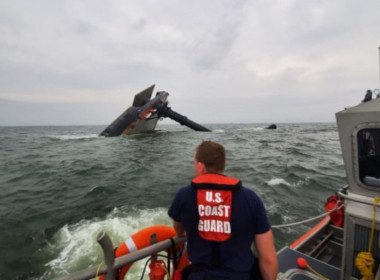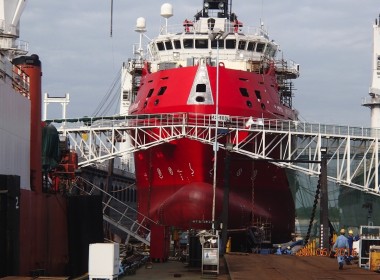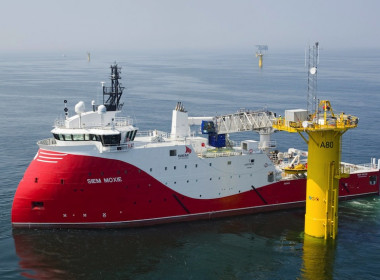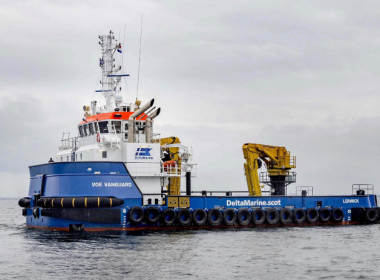COLUMN | I will survive: Seacor Marine channels Gloria Gaynor [Offshore Accounts]

Seacor Marine is a survivor. Most of its supply vessel-owning peers in America and internationally went bust in the extended industry downturn from 2015 to 2021, and were forced to restructure. Companies that went into Chapter Eleven-type restructuring processes included Tidewater, Bourbon, Solstad and Hornbeck. The shareholders in those companies lost just about everything when the creditors took control, but the businesses survived and emerged from the restructurings with smaller fleets and much smaller debt loads.
Other major players, including Deep Sea Supply, Farstad, Gulfmark, and Swire Pacific Offshore were sold off and acquired; others such as Nordic American Offshore, Toisa and Pacific Richfield Marine were simply liquidated.
And Seacor grew strong and learned how to get along
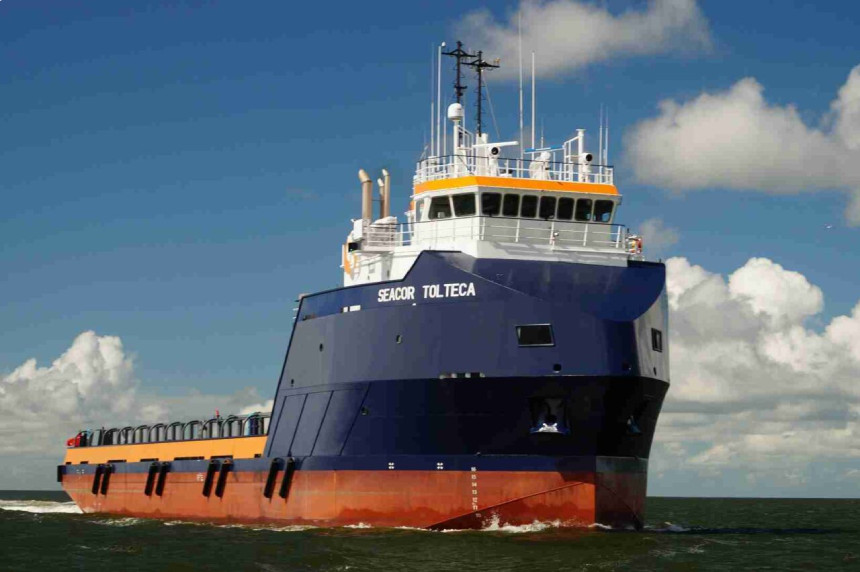
Seacor rode out the storm, its solid balance sheet and prudent management protecting it from a Chapter Eleven filing, let alone an appointment with the receivers. In 2018, Seacor pounced on the bankrupt Brazilian platform supply vessel (PSV) operator UP Offshore, buying a 49 per cent stake in the company, with Seacor’s Mexican partner CME buying the other 51 per cent. UP Offshore owned a fleet of 14 offshore vessels, 12 of which were located in Brazil and were registered under the Brazilian flag. Nine of the UP Offshore fleet were PSVs, four were ROV support vessels, and one was an offshore terminal vessel.
This seemed to position Seacor as a potential consolidator of the industry, buying bankrupt assets from troubled competitors at the bottom of the market. This had been a strategy Seacor’s co-founder Charles Fabrikant had pioneered right from the foundation of the company in 1989, when he bought NICOR Marine, a troubled operator of supply vessels in the Gulf of Mexico. He had joked that he had named the company Seacor because he had only to paint over two of the letters of the old NICOR names, thus saving money.
By 1992, Fabrikant had listed Seacor Holdings on the New York Stock Exchange, and he then embarked on a canny series of acquisitions in the OSV sector, buying Dutch operator Smit-Lloyd, French owner Feronia International Shipping, and several UK players active in the North Sea, including Boston Putford and the Stirling Group, before taking over Seabulk International in 2005 for a cool US$1 billion.
It took all the strength Seacor had not to fall apart
One reason for Seacor Marine’s survival in the torrid years of the industry downturn was due to it being part of that much larger marine holding company, Seacor Holdings, which was publicly listed and also owned harbour towage companies, Jones Act-compliant tankers, hundreds of river barges, oil spill response service providers, and other marine assets, mainly in and around the Americas; Seacor Holdings even owned helicopters for many years. However, in 2017, Seacor Marine from spun out from its erstwhile parent company Seacor Holdings, with Seacor Holdings shareholders receiving shares in Seacor Marine. Seacor Holdings was then sold to private equity company American Industrial Partners in 2021, a deal that valued the company at US$1 billion including debt. Our coverage of that deal was here.
Losing a parent is always sad, but orphans have to be resourceful. At the time of the spin-off from its parent, Seacor Marine had close to half a billion US dollars of debt, and the offshore market was in the midst of its worst downturn in thirty years. So, CEO John Gellert took steps to stabilise the business by selling assets to raise cash. And not only single vessels were sold, but whole business units were peeled off.
Go on now, go, walk out the door (Boston Putford, Windcat Workboats and Mexmar)
In 2019, Seacor sold its North Sea standby safety business, its fleet of 19 aging emergency response vessels working in the UK North Sea, to North Star Shipping (here). North Star paid Seacor Marine US$25.1 million at the exchange rate of the time, with an additional US$5 million payable by North Star if revenue targets were achieved (It looks likely that they weren’t achieved, as I did not see any extra payment in Seacor’s accounts after closing, but maybe I missed the line item.).
Seacor took a US$9 million loss on the book value of Boston Putford compared to the price North Star paid, according to its 2020 annual report (here). This consolidated the North Sea safety standby business nicely, with North Star (which is owned by private equity interests) taking a dominant position, alongside Vroon and Esvagt (which is also owned by private equity).
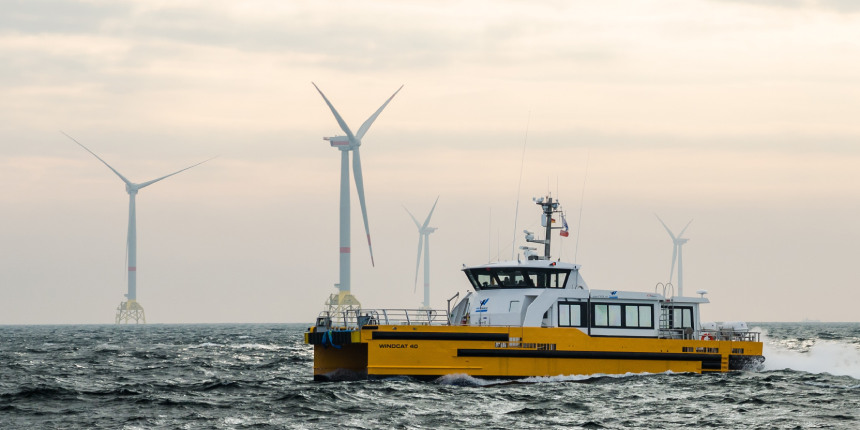
Then, Seacor sold its windfarm support fleet of crewboats in December 2020 to Belgium’s CMB for around US$44 million in cash (coverage here). This subsidiary, UK-headquartered Windcat Workboats, was active in the offshore wind turbine support vessel market in Europe, and owned and operated a fleet of 46 crewboats at the time it was sold to the Saverys family’s CMB.
Now Seacor has raised another US$66 million, selling its 49 per cent share in its Mexican joint venture Mexmar to CME (the same partner with whom it bought UP Offshore in 2018). This US$66 million price tag was pretty much the book value of the investment, according to Seacor’s most recent quarterly filing (here). What’s not clear is which vessels were included in the joint venture, and which vessels remain with Seacor. Mexmar’s website is a case study in poor design and obfuscation (here).
In the presentation to the Pareto Energy conference in Oslo in September, which included a slide on page six highlighting its fleet on June 30, Seacor boasted of operating five fast supply and intervention vessels (FSIVs), one liftboat, and fifteen PSVs in Mexico. You can review the presentation here. Seacor CEO John Gellert didn’t say whether these 21 vessels in Mexico were bareboated to Mexmar, owned and operated by Mexmar but included in the joint venture, or whatever.
You think Seacor would crumble? You think it would lay down and die?
However, a quick comparison of Seacor’s current fleet listing on its website suggests that if the website has been correctly updated, the Seacor PSV fleet has now shrunk to just 21 units, down from 35 mentioned in Oslo, and the FSIV fleet has been reduced to 23 units, down from the 30 FSIVs presented in Oslo. This suggests that the Pareto conference presentation did include the Mexmar fleet in the 80 ships of the Seacor fleet, and that the sale of the 49 per cent stake in Mexmar to CME includes those PSVs and FSIVs.
But these divestments have left Seacor facing a strategy quandary: the survivor’s dilemma. Seacor faces a number of inter-related issues:
- Is Seacor spread too thinly?
Diversification proved to be a sensible strategy in the downturn, as certain markets and segments were harder hit than others. Seacor has exited Asia-Pacific, and seemingly Mexico too, but it otherwise has a presence in five major markets, being the Middle East, West Africa, the North Sea, the US Gulf of Mexico, and South America.
Excluding the Mexican vessels, Seacor has around 60 ships in its fleet, so focus is lacking. The company has a global footprint, but it is spread thinly. According to the Oslo presentation, it had 17 vessels in the Middle East, 16 in the United States, 14 in West Africa, eight in South America, and just four PSVs in the North Sea. In none of the markets in which it competes is Seacor in any way dominant. In the Gulf of Mexico, its United States fleet had utilisation of less than 50 per cent, according to its most recent quarterly filing.
Similarly, in none of the vessel segments in which Seacor competes is it in any way dominant, either. If I understand correctly, based on the fleet listed on its website at the date of writing, Seacor has 23 FSIVs, 21 PSVs, 12 liftboats, and five anchor handlers. Again, Seacor is spread pretty thinly across vessel categories.
The traditional solution to this would be to buy, buy, buy. As well as the UP Offshore purchase, Seacor made a big investment in eight battery hybrid PSVs from Chinese shipyards, mainly of the UT771 design, which were priced at US$20 million apiece in the downturn. These PSVs are back in the money after this bold punt, at least – we covered the deal here.
But Seacor faces the problem that OSV prices have pretty much doubled across the board in the last 12 months or so. There are very few “bargains” left out there for Seacor to snap up – instead, speculators and private equity are again moving into the industry, and the biggest consolidation prize, Swire Pacific Offshore’s fleet of fifty vessels, was snapped up by Tidewater in March.
Any incremental acquisitions, such as a purchase of Italian FSIV operator Bambini or the remaining fleet of Emas Offshore in Singapore, are simply too small to move the needle, but anything bigger may stretch Seacor’s balance sheet.
- What size does Seacor Marine need to be?
When we first proposed that Charles Fabrikant should use the proceeds of the sale of his stake in Seacor Holdings to take Seacor Marine private (here) in December 2020, Seacor’s market capitalisation (the total value of its shares) was just US$50 million. Our advice looks prescient. Today the company has a market capitalisation of US$185 million. But… Tidewater’s market capitalisation is now US$1.360 billion, seven times larger than Seacor’s.
Seacor’s metrics are moving in the right direction. When we wrote about the company two years ago, Seacor Marine was weighed down by US$453 million of long-term debt. After the sale of its stake in Mexmar, the company’s debt should now stand below US$300 million.
Seacor has extended its debt maturity (the date on which its loans have to be repaid), and the company no longer faces the challenge of refinancing US$240 million of debt next year. This removes any immediate pressure for further action, but raises the question of how the company can prosper as a mid-size player, and in what vessels it can and should be investing.
- What is the strategy going forward?
Seacor says that it has one of the youngest fleets in the industry with an average age of just nine years. Many of the segments which Seacor serves are aging fast; for example, there are no new orders for liftboats in the US market, and the last vessel was delivered in 2015. In the US Gulf of Mexico, there are only two other operators of anchor handlers, with no deliveries since 2012. An aging fleet always provides opportunities for new investment.
Seacor operates nine battery hybrid PSVs, and this is an area where it once had clear technical leadership. But now competitors are catching up fast, with the global fleet of hybrid PSVs now standing at 69 vessels at the end of August, up 12 units in the preceding 12 months. Even Tidewater announced it would be upgrading its 2013-built PSV North Pomor with a battery pack a few weeks ago (here).
With its background in liftboats and its focus on sustainability, Seacor would seem to be well placed to move into the wind turbine installation vessel (WTIV) business in the United States, if its balance sheet permitted. But the first US-flag WTIV was built by Dominion Energy itself at Keppel’s Gulf of Mexico yard, and the second will be a foreign flag unit owned by Maersk Supply Service, using feeder barges to maintain Jones Act cabotage law compliance. The first contract for an American flagged service operation vessel (SOV) for wind farm support in American waters went to Edison Chouest in 2020, as we set out here.
Not that chained-up little person still in love with wind?
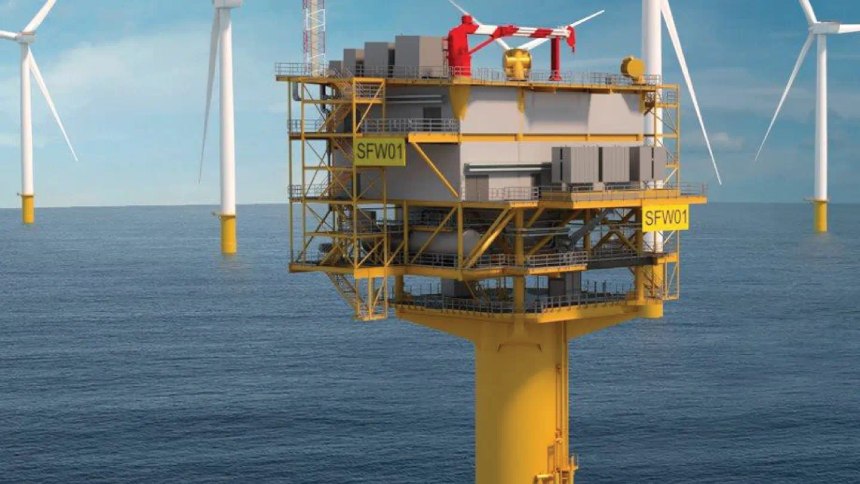
Seacor has won a contract to support the installation of the Southfork Wind Farm, a 50/50 JV between Ørsted and Eversource for 12 turbines that will generate 132 MW of clean energy. Seacor signed a contract with Cashman Equipment Corporation kicking off on November 1, 2022, for 60 days firm plus extension options, for the charter of the liftboat Jill and the FSIV Seacor Brave for a scope of work that includes personnel accommodation, hydraulic drilling of the conduit, as well as personnel and equipment transportation and other support services.
This is interesting, but again, the existing Seacor liftboat fleet is just too small to operate in the WTIV space or to compete with US$350 million WTIVs of the types which Eneti, Cadeler and Deme are building, and… Seacor’s balance sheet is just too small to “bet the farm” on a newbuild WTIV, which, to be built in America for Jones Act compliance, would cost about the as the entire market capitalisation of Seacor plus the value of its existing debt.
Conclusion: Oh no, not I, Seacor will survive
At first I was afraid, I was petrified of running an analysis of Seacor. This is a company which has never gone bust, has never restructured in Chapter Eleven, and is owned by some of the sharpest minds in the industry.
But the way forward is hard. By not going bust, Seacor has been forced to shrink and to honour its debts. In an industry where nine of the ten biggest players have defaulted or restructured, this is an incredible achievement. It took all the strength the company had not to fall apart.
But it now faces bigger and less-indebted competitors. Surviving the last eight years has been an incredible achievement, but thriving in the next eight years will be hard, too. Seacor needs more capital, and a credible investment plan.
Seacor will survive, but how?
Background Reading
You want to play Gloria Gaynor in your office, so click here for the YouTube video of I Will Survive.


